Steve Jobs may have hated them, but I’ve always liked styluses. I have a collection of them because I’m always trying to find the perfect one that doesn’t feel like a stylus at all, but more like a pen on paper. The latest stylus that I’ve had the opportunity to test is the Stilo stylus. The Stilo is an active stylus, which means that it is battery powered. Does that mean it’s better than a generic two dollar stylus? Yes and no. Let’s take a closer look.
Note: Images can be clicked to view a larger size.
The Stilo stylus is a pen shaped and pen sized stylus which is available in black or white. It has a straight barrel with a soft rubberized covering. The stylus tip is protected with a snap on cap.
That cap posts on the opposite end of the stylus when it’s in use.
The Stilo is compatible with iOS, Android and other touch screen devices like Windows Phone. I even tried it on my Dell XPS 13″ which has a touch screen. More about that later.
As mentioned in the beginning, the Stilo is an active stylus which is battery powered. It runs on one AAA battery which is included in the package. It installs quickly and easily into the barrel of the stylus and is held in place with a screw on cap. The battery should last up to 10 hours of continuous use or up to 1 month of typical use.
In the image above you can barely make out the power button on the barrel of the stylus. This button has a tiny LED that glows green when the stylus is powered on and red when the battery needs to be replaced. A simple click of the button toggles power.
The stylus has a fine tip which gives a more traditional pen on paper feel to using it on a tablet than generic large tipped styluses. The stylus tip on the Stilo is solid and hard.
Twisting the stylus tip allows you to adjust the signal strength of the stylus. If you look at the images above, you can see that the tip on the left is fully extended and the one on the right is not. The one on the left should have the strongest signal strength. According to the info on the Stilo site, this is important because:
You can adjust the signal strength by rotating the tip end clockwise and counter clockwise. As it is rotated the tip will move in and out. When the tip end is extended all the way out signal should be at its strongest. All capacitive touch screens are slightly different. Some capacitive screens might prefer a weaker signal while others a stronger one. Adjust the signal strength on your stylus to get the best performance for the application and screen you are using. If you are using a protective film, a stronger signal strength will likely work better.
The protective film they mention above is a screen protector. Stilo sells their own film that they call the Precision Film.
The Precision Film is a $19.99 optional purchase that is supposed to provide pen on paper feel for your tablet. It’s only available for a selection of iPads, Nexus and Samsung Galaxy tablets. Lucky for me, they have one for the Samsung Galaxy S Tab 10.5, which I own. Installing the film is no different than installing most screen protectors. I tested the Stilo with and without the Precision Film. I found that it did provide a little extra “drag” that provides a more pen on paper feel, but I didn’t like the finger on screen feel, which was also draggy.
The Stilo stylus does not use Bluetooth and does not require any special software in order to use it. Any drawing or note taking app will work. I tested the Stilo with a selection of drawing programs on my Samsung Galaxy S Tab and my first generation iPad mini. I also tested it with my Dell XPS 13″. Unfortunately it didn’t work well at all with the XPS. The “ink” skipped while writing and drawing. There would be gaps in the lines. Adjusting the signal strength by rotating the tip had to real effect on this issue.
The stylus experience on my Android and iOS tablet devices was much better. But although the Stilo’s fine tip is great for being able to easily see what you’re drawing and writing, this stylus suffers from the same problems that most active styluses suffer from: ink lag, diagonal line jaggies and point offset. It seems like the ink is always trying to catch the tip of the stylus as it travels around the screen. For drawing simple shapes it’s not a big deal, but for detailed drawing and small writing, it makes things a lot harder. The point offset problem is more of an annoyance than a true problem. Some people might even like that the point on the screen is not quite under the stylus tip when it’s pressed on the screen. Note that some apps even allow you to adjust the offset.
I like that the Stilo stylus is comfortable to hold and easy to operate, but unfortunately, the issues with lag keep me from loving it.
Source: The sample for this review was provided by Stilo. Please visit their site for more info and Amazon to buy one.

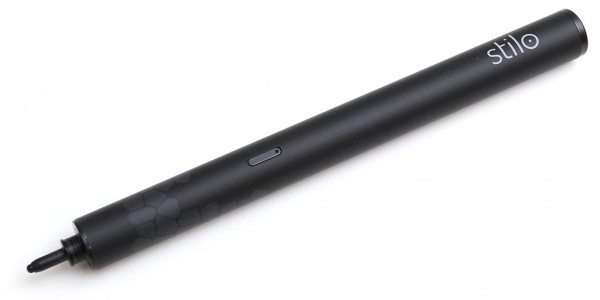


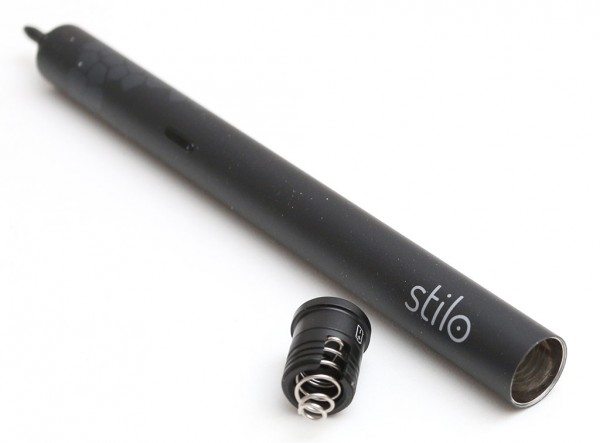
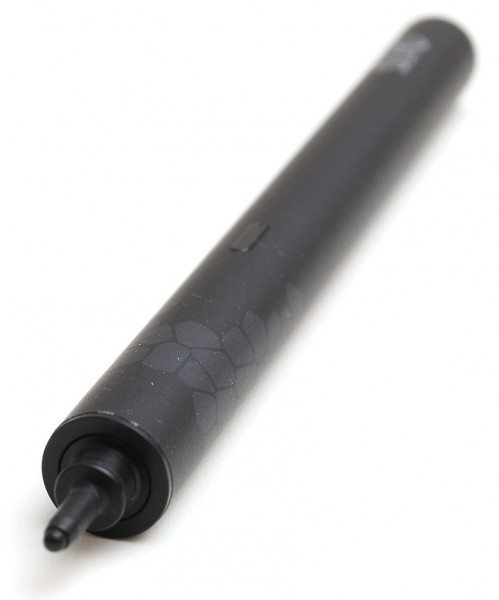
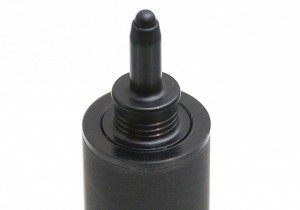
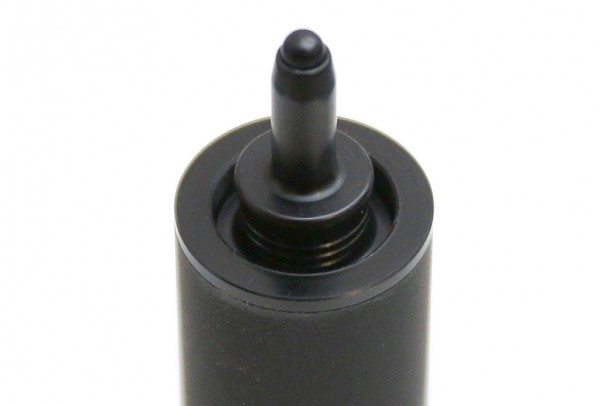
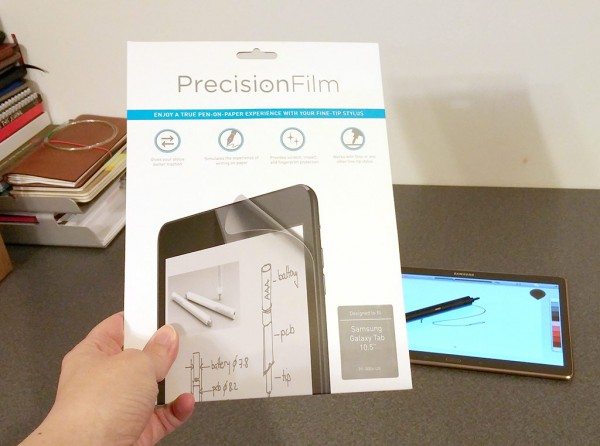
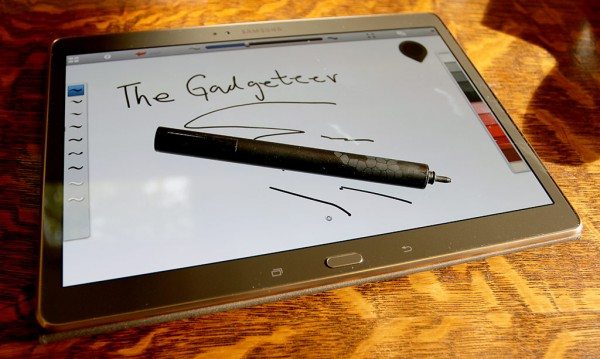


Gadgeteer Comment Policy - Please read before commenting
Thanks Julie for the review. As always, straightforward and practical.
When I saw that you were reviewing one of these styluses, I thought I would purchase one also. About $70 from Amazon. The packaging was so difficult to open without tearing the box (I like to keep the box intact in case of the need to send it back).
I tried it on a Dell 13 touchscreen laptop and an iPad Mini 2. Laggy on both machines. They are advertized as “no lag”. Not so. I sent it back to Amazon and then got an email from the sellers who offered me a free Stilo which would be checked out by their technicians. They also said they would report back my feedback on the packaging. Great customer service if you ask me.
In the interim, I had purchased an Adonit Jot Pro. So, I had the two to compare. The new Stilo worked much better, but still some lag. The barrel is not too thick, but thicker than a normal pen (it is slightly thicker than a AAA battery obviously, since that is what powers it). The instructions did not describe about the sensitivity adjustments (I got that from Julie’s post). It worked fine, but…….
The Jot Pro worked just as well. In addition, the Jot has a thinner barrel made of metal that was really nice to hold. The Jot end cap is store by screwing it onto the other end of the barrel. Very nice. Then there is the price: Jot $24; Stilo $70.
The disc on the end of the Jot seems to encourage me to slide the stylus across the screen, rather than the Stilo which I tend to lift now and again (and because of the lag in the Stilo, I get breaks in the text). Simply as a tapping device for selecting actions on a screen, the Stilo may work slightly better, but that is marginal).
So I will be passing the Stilo on and stay with the Jot Pro.
Now, does anyone have a Surface device who can compare the Stilo, Jot Pro with the Surface Pen?
Thank you for sharing your experience with the Stilo. As for your complaint about the packaging, I didn’t find it an issue. There’s a little tab that you use to slide out the inside stylus holder portion of the box.
You (as do most tech writers) misunderstand Job’s comments about stylus. He disdain was for devices that REQUIRED stylus interaction to operate it. There are plenty of uses that stylus are good for but operating a device isn’t one of them.
If you’d rather use a stylus to operate your device that’s up to you. Or to use a stylus for artistic design is common sense.
I certainly see the most useful purpose for a stylus is for writing notes and annotation of documents. Marking up a pdf with highlights and scribbled notes. Operating a device with a stylus should not be on the list. Having said the latter, Windows touchscreen devices are often not finger friendly, and a more precise tool such as a device can be helpful. But I agree that this is the fault of the o/s not being touch friendly.
I wonder how this would work with the Surface Pro.
Great review Julie. Have you found any stylus pens that work with the touch screen xps13? I haven’t had any luck
I’ve not had much luck either. It seems that the majority of these active styluses are designed for iOS. I’m not really sure how the touch screens differ, but all the ones I try are barely useable on the XPS 13. I guess the market isn’t large enough for Windows only styluses yet
Thanks for your detail and useful review.
I’m using Dell XPS 13 9343(with QHD Touch Screen, maybe identical with yours) and trying to look for a suitable stylus for it. Since I’m a student, not a designer or something, just smooth note taking would be fine and enough.
Is ink-skipping of Stilo in XPS 13 you mentioned in your review that much severe? to the degree that disturb my note taking in PDF files?
If so, can you suggest some other appropriate stylus for me? It would be really helpful to me.
Thanks….
Thanks for your site, Julie, and thanks a lot for your comment, Richard.
I am looking for a convenient stylus to write on my Zenpad Z580C.